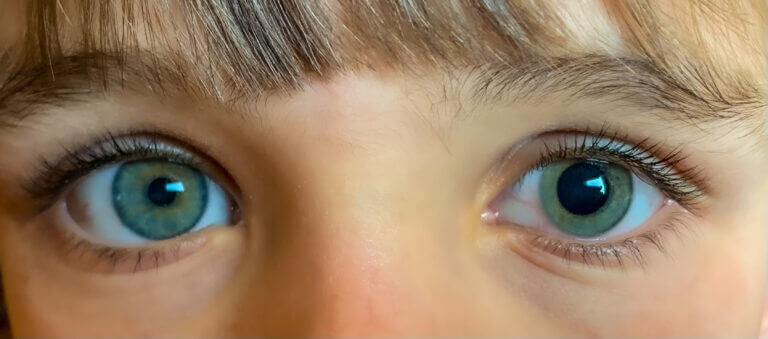Questions and answers about dilating eye drops
Posted in Bellingham, Dilating Eye Drops, Eye Blog, Eye Exam, Medical, Mount Vernon, Sedro-Woolley, Stanwood, Whidbey
Your Eye Dilation Questions Answered!
One of the questions we get asked most frequently is regarding the dilating drops we use during our Comprehensive Eye Exams.

Getting your eyes dilated for the first time is a strange feeling. We’ve already explained why Cascadia Eye doctors prefer to dilate during your comprehensive exam in a previous blog, but there are still plenty of questions to answer about it. Even experienced patients want reminders sometimes: “How long does eye dilation last?” and “How long before I can drive?” and “How can I make dilation go away faster?”
In addition to answering these questions, we will also reveal a few surprising facts about dilation that you might not have known before.
How long do eyes stay dilated, and can it be reversed?
Sadly, there is no hard rule for how long your eyes stay dilated. We tell patients it can last for three hours on average, but it could be very different for you. The truth is that length of time can vary from 45 minutes for one lucky person, to all day long for another, and occasionally even into the next day. So if you find your pupils are still dilated the day after your eye exam, don’t panic!
Can I drive after dilation?
In general, you can. Dilation doesn’t actually affect your distance vision at all (more on that later). However, light tends to seem brighter after dilation, and the increased glare can make driving difficult. We always encourage patients to bring sunglasses for the drive home, and we also provide wraparound shades for further coverage. Some patients still feel uncomfortable driving with glare, and it’s definitely a matter of comfort levels for the individual. So if you prefer to have someone drive you, you certainly can–but you don’t have to.
Will it affect my work for the day?

If you do work that involves fine detail and close reading, yes. It will likely be pretty difficult to get work done. A lot of patients with jobs that involve reading choose to have their appointments later in the afternoon, so they have most of the day to work uninhibited.
A little-known fact: if you are already nearsighted, you are actually in luck! Provided you have the right range of visual acuity, you might be able to simply take off your glasses and read at the distance your eyes naturally want to use. I suggest trying it out, nearsighted people, and seeing if it works. Unfortunately it won’t work on farsighted prescriptions or astigmatism.
If you’re doing manual labor or other jobs that don’t require fine detail, and are comfortable with glare, you can probably go ahead and work after dilation. However, you may want to avoid operating machinery until later.
How does it work, anyway?
The drops we use to dilate your eyes are actually a combination of two drops: one paralyzes the muscle that contracts to make the pupil smaller (much less scary than it sounds), and the other stimulates the muscle that has the opposite effect on the iris, widening the pupil. (Remember, your iris is actually a very pretty muscle!) The results inhibit your eye’s ability to change focus, which is why you have trouble reading afterward. It also gives your doctor a better window into the lens and back of your eye, something we need for some kinds of eye surgery, such as cataract surgery, and slit-lamp exams (the dilated portion of your exam)–especially so doctors can see parts of the retina that wouldn’t be visible to them without a dilated pupil.
The proportions of these two drops depend on the situation: we might use one combination for a surgery patient and another for a slit-lamp exam, or yet another one for a small child’s exam. It depends on the strength and how long we need the dilation to last. A child needs a pretty powerful drop, for example, because young eyes adapt their focus too well–we would never get an accurate reading of their visual acuity otherwise.
Why this might sound familiar…
Interestingly enough, the results of having your eyes dilated mimic a common occurrence with aging eyes. Presbyopia, the technical term for “you need reading glasses,” occurs when your lens stiffens over time, losing the ability to change focus and adapt to vision at different distances. It doesn’t have anything to do with your iris muscles like dilation does, but the results are virtually identical: since you can’t change focus, your ability to read fine print up close–or even at arm’s length–is inhibited. Or, as some patients put it, their “arms are getting too short.”
So conceivably, if you are a patient who already needs reading glasses, you might not even notice the dilation messing with your near vision. You’ll still have to contend with the glare for a little while, though.
Contact Cascadia Eye
If you would like more information, or if you would like to schedule an appointment at Cascadia Eye, please contact us today.


